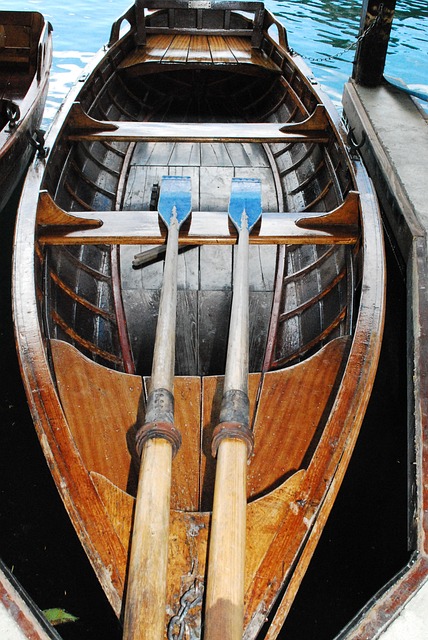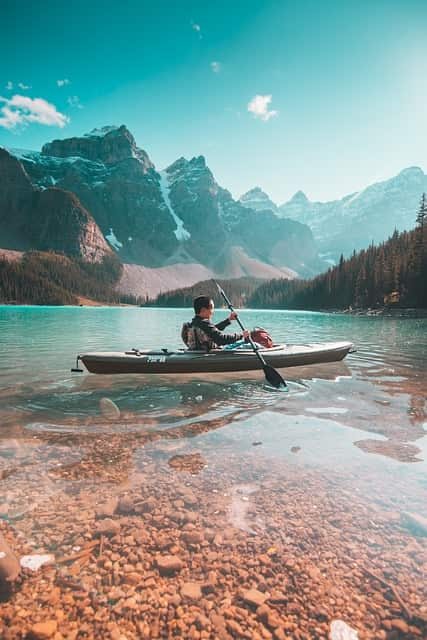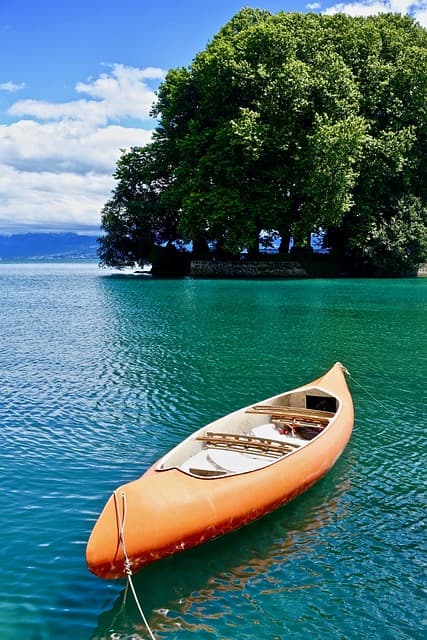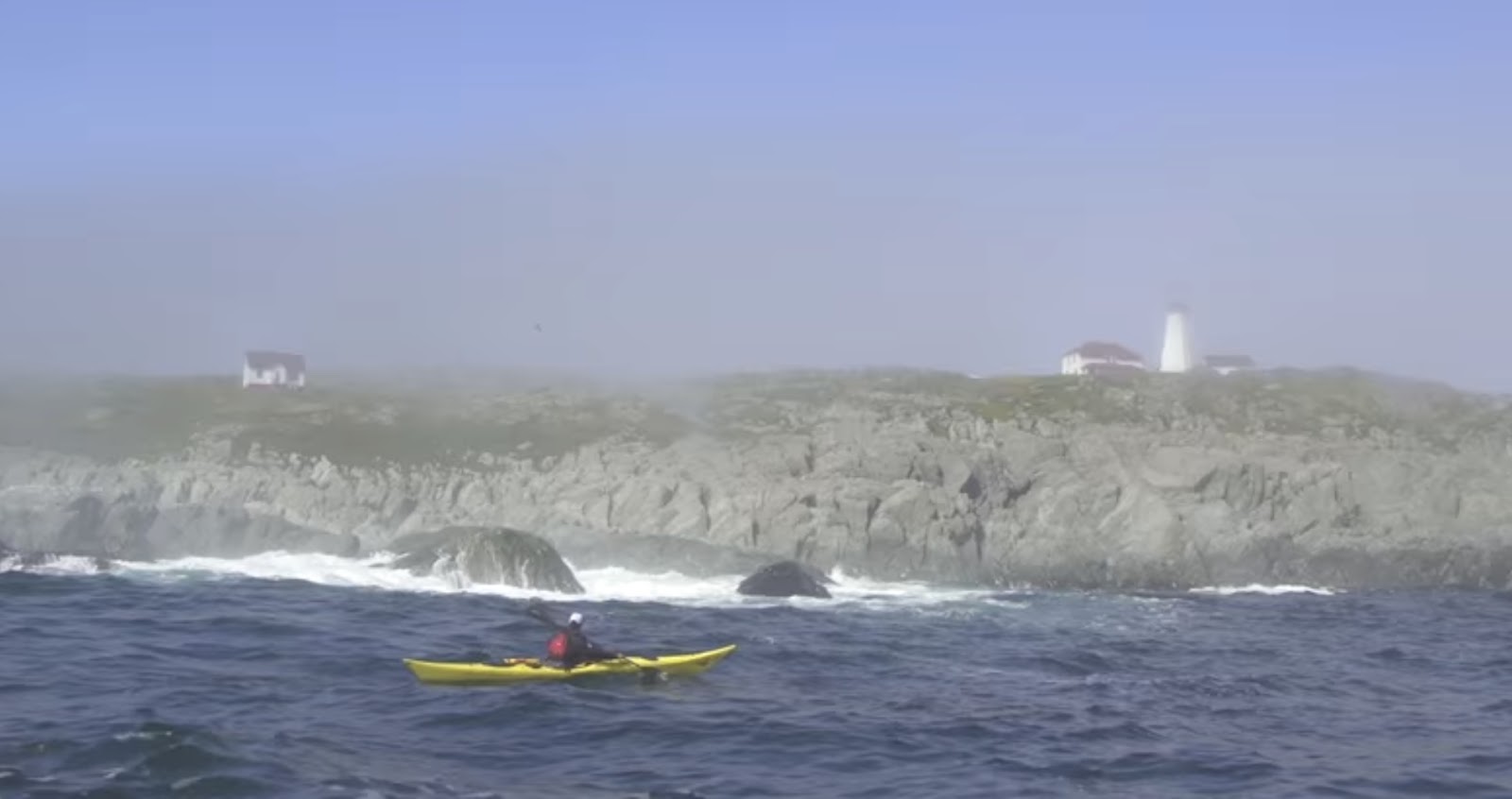Amidst the realm of Oklahoma’s boating regulations, the overseeing authorities have grasped the wisdom of embracing minimalism. Within this expanse of rules and guidelines, a philosophy of simplicity prevails, resonating with the belief that safety and enjoyment can coexist harmoniously without unnecessary complexities.
This doctrine of minimalism serves as the rudder that steers the ship of regulations, allowing the governing bodies to maintain a delicate balance between freedom and responsibility. By recognizing that less can often be more, Oklahoma’s approach to boating laws demonstrates a keen understanding of the need for clarity and ease of compliance.
In a world where rules can become entangled in a web of bureaucracy, this commitment to minimalism is a refreshing breath of air. It invites boaters to navigate the waters with a sense of empowerment, knowing that the regulations are designed to provide protection without encumbering the experience. With this foundation, Oklahoma’s waterways become a canvas for exploration, where both seasoned mariners and newcomers can embark on their journeys with a clear understanding of the guidelines that ensure safety, respect, and the preservation of the aquatic wonders that unfold before them.
Exemptions for Non-Motorized Vessels
Oklahoma’s canoe and kayak regulations unfold with leniency for non-motorized vessels. These craft escape the clutches of registration, yet an obligatory mandate endures: every canoe and kayak must harbor a life jacket for each soul aboard, alongside a raucous sound instrument akin to a whistle.
Guardians of Regulation
Enter the stage: The Oklahoma Highway Patrol Marine Enforcement Division, bearing the mantle of oversight for the aquatic tapestry of Oklahoma’s laws. Alongside them, the Lake Patrol Section troopers of the OHP Marine Enforcement and the U.S. Coast Guard, granted jurisdiction over federal waters, stand vigilant in enforcing these edicts.
The Enigma of Canoe Registration
Unpowered marvels, human-powered vessels remain aloof from the chains of registration. Yet, a curious quirk emerges: Oklahoma law proclaims that every vessel primed for traversing the state’s terrain must be endowed with a title. This decree manifests as a separate procession from titling the outboard motors, a task obligatory in its own right.
Craft Operator Mandates
Should the vessel boast a heart of motorized splendor, registration unfurls its demands. Any vessel eclipsing the 10 HP threshold, replete with a motor, yearns for an annual registration to reside within its hull.
Age and Motor Musings
Eager minds inquire: Does age bar the helm of electrically charged canoes? Non-motorized crafts dole out liberty, permitting all ages to navigate. The tapestry alters when motors roar to life: under-12s yield to a 10 HP limit, while those aged 12 to 15, equipped with a boater certification and under the wing of a vigilant elder, may brave mightier motors.
- The landscape of age opens as a narrative within the world of warcraft. The canvas of non-motorized exploration remains unblemished by age restrictions, extending its welcoming arms to every generation. Yet, as motors are ushered into the equation, a shifting dynamic emerges;
- The youthful dreamers, those below the age of 12, are met with a cap on horsepower, an emblem of prudent caution;
- For the emerging mariners between 12 and 15, the realm of possibility expands, provided they master the art of boater certification and march forward under the tutelage of a seasoned guide. This passage through age, horsepower, and knowledge navigates the delicate balance between youthful aspirations and the wisdom of experience, a blend that carries Oklahoma’s future mariners into their journeys with an understanding of limits, a glimpse of possibility, and a call to responsible exploration.
Intoxication and the Waters
A rule unswerving holds dominion: no intoxicated hand shall steer the vessel. Spirits or substances, an intoxicated mariner is one with a BAC of 0.08% or higher. A swerve from sobriety leads to the test of field scrutiny, where any impairment decries the helmsman.
Amidst the fluid realm of the waters, a steadfast decree stands unwavering: no conductor, be it fueled by spirits or substances, shall command the vessel’s course under the sway of intoxication. The scale tips at a BAC of 0.08% or beyond, marking the boundary between clarity and impairment. Should the siren call of inebriation be heeded, the stage shifts to one of evaluation, a field of scrutiny where balance, coordination, and judgment are weighed with a vigilant eye. This unyielding principle stitches threads of responsibility through the very fabric of boating in Oklahoma, reinforcing the notion that the helm is reserved only for those whose senses are untainted, and whose focus is unclouded by the fumes of intoxication.
Life Jackets: A Necessity for All Ages
Afloat in the realm of canoes and kayaks, regardless of size, a paramount mandate takes center stage: a Type I, II, or III US Coast Guard-approved personal flotation device (PFD) must grace each passenger. Yet, the younger denizens of the waterways, those aged below 13, wear this life-preserving armor at all times during their aquatic escapades. Echoes of caution resound: the PFD must stand undamaged, accessible, and tailored to its bearer’s frame.
Rising Sound of Safety: Emergency Alerts
Embracing the crescendo of Oklahoma’s boating laws, every vessel within state bounds embraces the symphony of a piercing alert. Unpowered or powered, each canoe or kayak must bear witness to this cacophony through a whistle or powered horn. A decibel dance commences, the Fox 40 whistle leading the orchestra, yet for the audacious souls, the Hyper-Whistle’s bolder notes beckon, stretching further and louder, a beacon in the night. Alternative devices, an air horn or otherwise, beckon from the wings, but the whistle, petite and ever-vigilant, claims its space in this sonic ballet. The rhythm of the whistle resounds as more than a mere auditory command. It embodies preparedness, a safeguard against the unforeseen. Its compact form hides its vital role, waiting to pierce through the serene canvas of water with an urgency that commands attention.
Amidst the tranquil expanse, this auditory vigilance bridges the gap between the tranquil serenity of nature and the need for responsible navigation. With the Fox 40 whistle, the guardian of sound is reliable and well-known, while the Hyper-Whistle pushes boundaries with its amplified resonance. Together, they echo the essence of preparedness and communication, serving as both a plea for help and a beacon of caution. In this interplay of sound and silence, boaters of Oklahoma commune with the symphony of safety, united in their embrace of the boating laws’ resounding alert.
Guiding Light through Darkness: Emergency Illumination
A query arises: in the shroud of night, does light beckon to guide the canoe’s bow? Indeed, for the unpowered voyages, a radiant white lantern emerges, its luminance piercing the black canvas, thwarting collisions with timely grace.
- Anchorage, if straying from designated mooring realms, calls for a white light sentinel. Oklahoma’s council commends the dual hue symphony, red and green lights gracing the bow’s helm under the curtain of night. A voyage at dusk and dawn finds solace in this illuminated harmony;
- As the sun dips beyond the horizon, the stage of the waterways transforms. The white lantern emerges as the custodian of safe navigation, casting its glow upon the inky waters, revealing the path forward. Its luminescence extends the invitation to traverse the nocturnal expanse, where hidden obstacles retreat from the curtain of light;
- Anchored outside designated refuge, a solitary white light stands as a sentinel against the shadows, a guardian against unexpected approaches;
- In the embrace of twilight’s symphony, the bow’s lights emerge as guiding constellations, painting the water’s surface with hues of caution and cooperation. Red and green, twin beacons of navigation, usher vessels through the velvet abyss, a lighthouse of camaraderie amidst the vast, uncharted seas of the night.
Through the rhythm of light and the dance of color, Oklahoma’s waterways proclaim their harmonious relationship with those who venture upon them, offering the promise of a journey safe and sure, even when the stars themselves are obscured by the night.
Unveiling the Unseen: Visual Distress Signals
Within Oklahoma’s confines, the cry for visual distress resounds only in the realm of federally-controlled waters. These waters alone bear witness to the obligation of this maritime outcry, a signal to the unseen, a plea for rescue unspoken yet potent in its luminous flare.
Fire’s Foe and Canoe’s Sanctuary
With reason, fire extinguishers yield their dominion from the realm of canoes and kayaks. The realm of water is a sanctuary from the flames, where a mere splash or a masterful capsize quenches the spark, ensuring that the blaze remains no more than an unlit ember.
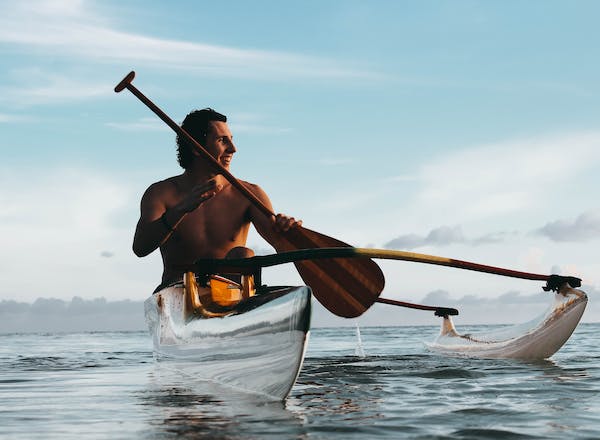
Conclusion: Navigating Waters Safely in Oklahoma
As the currents of Oklahoma’s waterways converge, safety takes its rightful place at the helm of every canoe and kayak voyage. The regulations, intricately woven into the fabric of the state’s boating laws, stand as a testament to the guardianship of those who seek to preserve both the thrill and tranquility of aquatic exploration.
In the realm of life jackets, the shield of buoyancy extends its embrace to passengers of all ages, ensuring that each individual’s journey unfolds with a layer of protection. The crescendo of safety rings through the call of emergency sound devices, an audible reminder of preparedness that harmonizes with the water’s melodies. Illuminated by the glow of emergency lights, Oklahoma’s waters become a theater of guided navigation, where bow lights and beacons paint a canvas of visibility and assurance.
As the curtain falls on this narrative, the wisdom of adhering to these regulations is illuminated. In the heart of every law lies the essence of safeguarding life, offering a testament to the state’s commitment to responsible exploration and the preservation of its pristine waters. In the union of adventure and security, Oklahoma’s boating regulations write a story of harmonious coexistence between humans and their watery realms, ensuring a symphony of safety as canoes and kayaks glide through the splendor of the state’s aquatic landscapes.
